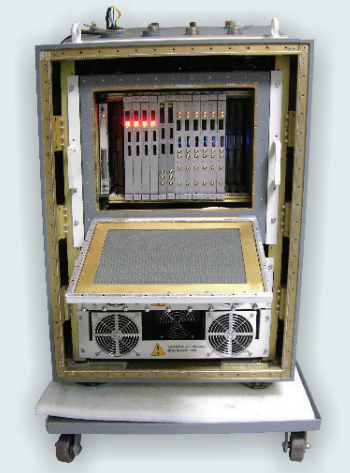Programmable Signal Processing Unit – System Development and Integration
Introduction
Recent trends show Indian Defense labs moving from sourcing diverse components from multiple vendors to acquiring complete, integrated solutions from a single vendor paving the way for systems integration – a systematic methodology used to develop a wholly integrated system composed of diverse specialized structures and sub-systems. Having a resource to provide the complete solution helps end users free internal resources to focus on their core area i.e. designing their application and getting their product-to-market faster. 
This case study showcases Mistral’s expertise in the system integration of a Programmable Signal Processing solution, from evaluating the customer needs and expectations to producing an optimum solution custom-made to fit the specified requirements.
The Customer
A leading Defense Lab in India approached Mistral to build a Programmable Signal Processing unit for Radar.
The Requirement
The customer’s requirement was to develop a system consisting of:
- Complete hardware housed in a single rack
- System wiring: both internal and external based on the inputoutput sub-system requirement
- External interface: real-time inputs to the intelligence system to dynamically change the functionality
- Data Acquisition: two independent ADC channels sampling at maximum of 65 MSPS, with ENOB of 11 bits and SNR 66dB
Processing sub-system:
- Processing unit with a total of 30+ GFLOPS processing power
- Processing distributed in various nodes and capability to expand
- High-speed data connectivity between processing nodes and data acquisition system
Output sub-system:
- PowerPC based high-speed system to output real-time data after processing
- Future expandability to output recorded data.
The Solution
Mistral provided a solution consisting of:
- 6U single rack assembly designed to house hardware with a VME backplane
- Standard wiring assembly from an approved vendor, to cater to the design requirements
- Real-time OS (VxWorks) running on VME based SBC from Curtiss-Wright (SVME 183) used for external interface
- Data Acquisition hardware using Mistral’s VME based ADC Board:
- One ADSP 21160 SHARC DSP from Analog Devices for data processing capable of 480 MFLOPS performance
- 4 M-bits Flash memory with 4096×36 bit FIFO
- Dynamic DC offset control and other programmable options with 200 Kgates SPARTAN 2 FPGA
- Operating temperature range: – 20 oC to +55oC
Processing sub-system using Mistral’s VME based 12 SHARC (V12S) Boards:
- 12 ADSPs in a single board. Using multiple V12S boards the 30+ GFLOPS performance was easily achieved
- Data to be processed was distributed evenly across processors by receiving data from acquisition cards, making use of the complete system processing power
- Connectivity across nodes on the link ports on board and across boards
- Connectivity of each processing board in system with data acquisition system on link port
Other features of V12S Board:
- 12 ADSP-21160 SHARC processors from Analog Devices (ADI) for data processing with performance of 5.76 GFLOPS
- PMC site for expandability
- 64 Mbytes SDRAM and 32 Mbytes Flash memory
- Distributed link port architecture for point-to-point communication between DSP’s with complete link port interconnectivity possibility and additional switching software
- 12 off-board Link ports: 6 at front panel and 6 at P2 connector for interfacing with Data Acquisition cards
- Operating temperature range: -20 oC to +55 oC
Output Sub-system:
- SVME 183 SBC from Curtiss Wright supports dual Ethernet ports of which one of the ports is dedicated for data output from the system
- Interfacing of system was done using cables of 5-6 inch length.
- Dummy boards and a Sandwich board (customized VME Backplane board for General Purpose Interface) were designed to achieve the data transfer length and avoid data corruption
Dummy board features:
- Buffers for data acquired to reach the processing sub-system
- PMC slot for expandability to output recorded data
Sandwich board features:
- Connectivity of dummy board data to V12S Board (on P2 general purpose bus)
- External interface connectors for wiring
- Reduced external wiring and good signal integrity.





